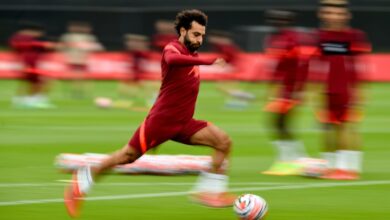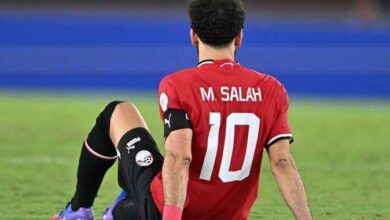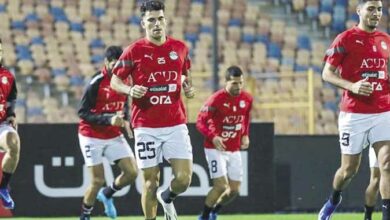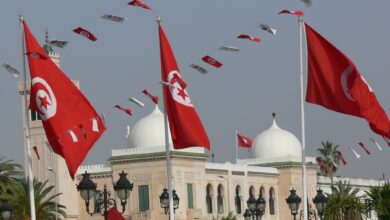The difference between ultras and casual soccer fans is simple but crucial.
“What separates ultras from normal fans is how radical they are,” explains Mohamed Gamal, sportswriter, author of the upcoming “Ultras Handbook” and in 2007 founder of the Zamalek White Knights.
In short, ultras are the type of supporters commonly referred to as “soccer hooligans” — a term that seems well-deserved considering their history of violent antics and vandalism. In a country where soccer is as much an issue of personal pride as a national sport, and where, until recently, ‘freedom of expression’ was largely limited to expressions of triumphant victory or crushing defeat on the field, it comes as no surprise that tensions constantly ran high between the opposing groups, as well as authorities.
In recent weeks there has been a renewed focus on the ultras. Three weeks ago an all-out brawl erupted during a match between Tunisia and Zamalek in which several members of the Tunisian team and an Algerian referee were injured. Some local media reported that ultras were mobilized during the 18-day uprising that led to the ouster of president Hosni Mubarak, both on the anti- and pro-regime sides. But even in the new era of political openness, ultras plan to remain apolitical and committed to their usual antics.
Despite being a die-hard Zamalek supporter, Gamal recently left the group (to “focus on other interests,” he claims) but is still considered an authority on the ultras movement in general. “They are extremists, if you want to use that word,” he says. “And like all extremists, they make people a little anxious.”
There is no shortage of well-documented incidents — including the recent Zamalek-Tunisia clash — between Egypt’s two largest ultras groups, the White Knights and the Ultras Ahlawy, as well as other, smaller groups such as the Yellow Dragons from Ismalia, or Tanta’s 300. However, Gamal argues that the media is partly to blame for the largely negative public opinion.
“First, there’s the problem of the media not understanding the individual groups and, as such, not being able to differentiate between them,” explains Gamal. “So, they end up clumping them all together under the same name — ultras.”
Another problem, he says, is the lack of what he calls “respectable and reliable” sports journalists. “A lot of sportswriters and media personalities are paid to slander a certain group, or shift public opinion against them for the sake of an opposing team,” he claims.
Nevertheless, and as Gamal is quick to corroborate, “the ultras do tend to get violent very quickly.” His explanation for the Zamalek-Tunisia brawl is simply that “the fans were unhappy with a decision made by the referee, and they went down to the pitch. Which is normal.”
Surprisingly, Gamal’s dismissal of the stadium-wide altercation as a typical byproduct of ultra-fuelled belligerence is not shared by current members of the White Knights, particularly those who claim to have been there.
Gathering in front of the Tunisian embassy days after the incident, a large group of White Knights held up banners and posters and called out chants, in an attempt to apologize for the assault. Those who had been directly involved in the ruckus seemed the most penitent.
“Most Tunisians wouldn’t accept our apologies on Facebook and internet sports sites,” complained 21-year-old Omar Madar. “That’s why we’re here.”
If the Tunisians rejected the initial wave of Facebook apologies, it’s safe to assume that the White Knights’ second attempt at reconciliation — which Gamal would probably describe as being “typically” aggressive — also failed to win them over. Despite being gathered for a shared purpose, the group of approximately 300 supporters argued loudly among themselves, trading insults, orders and threats. The less abrasive members playfully shoved each other into the street and passing traffic. The fact that they all seemed to be sober robbed them of any potentially redeeming excuse.
“We had no intention of destroying anything or attacking anyone,” Madar said, recalling the Zamalek-Tunisia game. “We even went to the game with banners supporting the Tunisians’ revolution.”
“We cheered and saluted their team when they came onto the pitch,” he said.
“I don’t know what sparked that fight,” says his friend and fellow White Knight Amir Mohamed. “But I remember thinking it was weird that the police weren’t searching anyone at the stadium. We [my friends and I] thought it probably had something to do with the tension that still existed between police and civilians, but they still should have searched people.”
“I’m a good person with good intentions,” Mohamed says. “But there were other people there who you couldn’t say that about, and they should have been searched.”
When asked about whether he joined the sudden violence or remained in the stands as many fans did, Mohamed answers without hesitation. “Of course I went down there. The White Knights have one thing on their mind — the Zamalek team. I had to go down there and support them in any way that I could.”
“Besides,” he insists, “everyone else was doing it.”
Ignoring all inquiries into the exact methods of his “support,” Mohamed instead clarified, “We’re not trying to blame this on the National Democratic Part, or suggest that there was some conspiracy behind the fight. It was just a bunch of excited fans with nobody to stop them.”
“It was a trap,” he said, “and we fell into it.”
It remained unclear who Mohamed and other similarly-thinking White Knights believe was responsible for setting the trap, as at that point the interview was interrupted by an elderly Knight who pushed this Al-Masry Al-Youm reporter aside and asked for “cover” so that he could urinate against a parked car.
This type of behavior is the lighter side of what people seem to expect from ultras in general, and while it is generally frowned upon, Gamal suggests that it gave them an upper hand in the chaos of the recent revolution.
“The ultras are not politically active,” he says, dismissing recent suggestions extremist fan groups had mobilized in support of either the protesters or former president Hosni Mubarak. While several recognizable figures such as national team coach Hassan Shehata and Hossam and Ibrahim Hassan, who share a history as twin idols of pettiness and bad sportsmanship, took to the streets in support of the toppled dictator, encouraging intimidation tactics and outright violence, Gamal argues that the ultras failed to form a united front, and instead reacted as “Egyptians rather than soccer fans.”
“They didn’t mobilize as a group, or anything like that,” Gamal states. “The only difference between an ultra and a normal protester is that the former knows how to take on a state security officer, out of previous experience.” Four ultras were killed in the 18-day uprising that led to Mubarak's resignation.
“The ultras just treated it like a typical fight,” he explains. “They went in there and bashed heads and took rubber bullets, and kept fighting. They’re used to it.”




